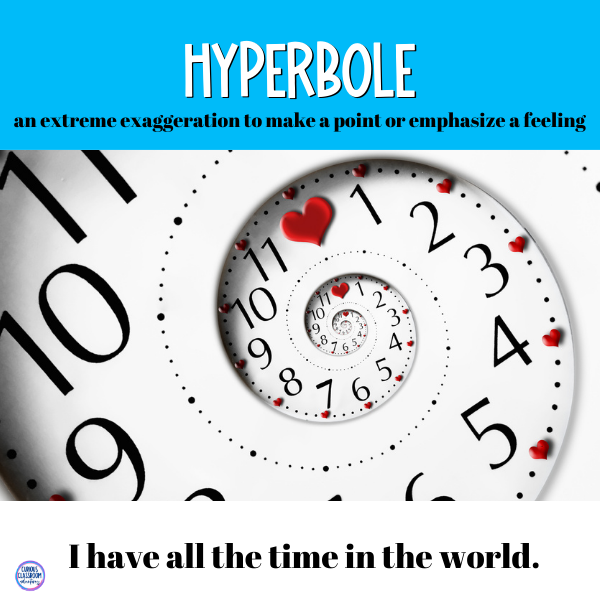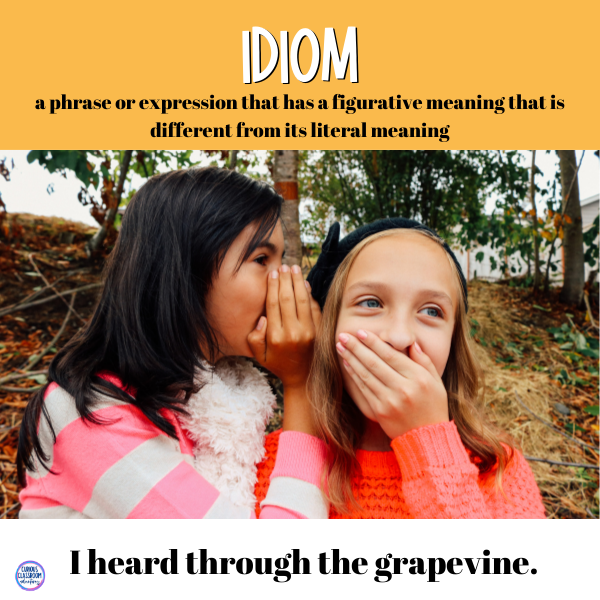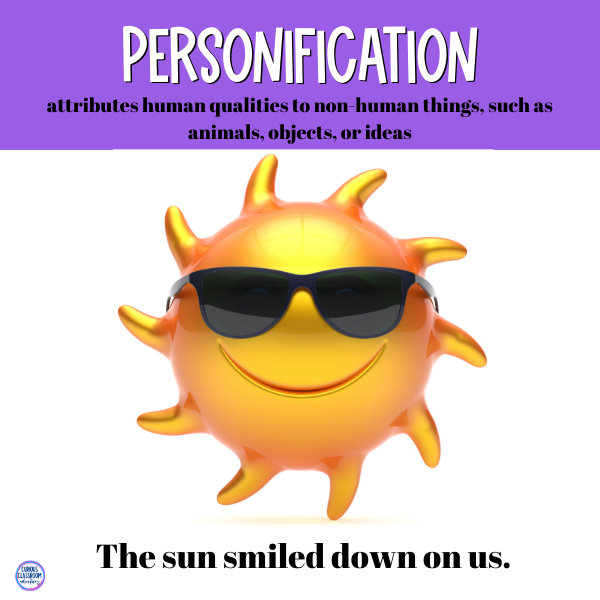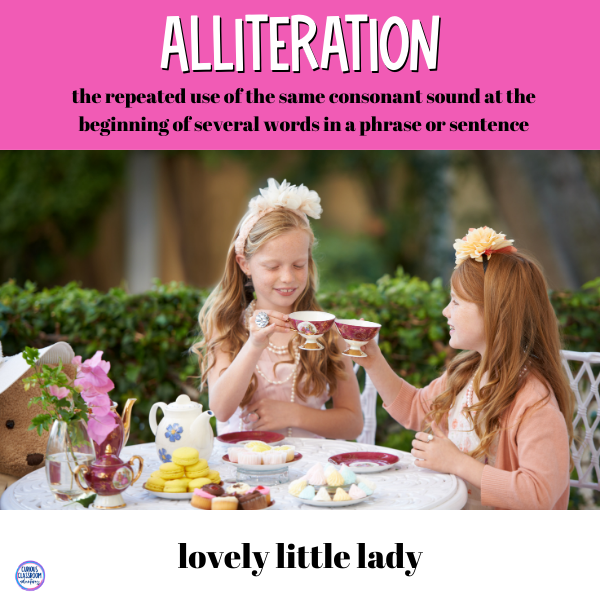As a language teacher, you may have noticed how figurative language adds depth and color to any text, and even to spoken communication. It enhances how we express our thoughts and emotions, making abstract ideas more understandable and relatable.
Figurative language is a powerful tool that helps students not only better understand the books they’re reading, but also allows them to express themselves in new, creative ways. Thus, teaching figurative language to your students is a way of equipping them with the skills to better appreciate and analyze literature, while also expanding their vocabulary and creative thinking.
However, teaching figurative language can be challenging, especially for younger students who are still developing their capacity to understand and interpret language. In this blog post, we’ll explore the different types of figurative language commonly found in literature, and suggest fun and engaging activities that you can use in your classroom to help your students identify and appreciate them.
Teach the 6 types of figurative language
Similes
Let’s start with an easy one. A simile is a comparison between two things, usually using “like” or “as.” For example, “Her eyes sparkled like stars.”

To teach similes, you can give your students a list of adjectives and have them come up with similes to describe those adjectives. You can also create a game called Simile Face Off where you say half of a simile, and they have to complete it. To play put students in pairs. Read the first half of a simile such as “his ears were as big as ____.” Students take turns finishing the simile with different endings until one person runs out of ideas. The goal is to last longer than your partner.
Metaphors
Metaphors are another type of comparison, but unlike similes, they do not use “like” or “as.” Instead, they directly equate one thing with another, saying that one thing is another. For instance, “Life is a journey.”

To teach metaphors, you can have your students find examples from books or other reading materials, or have them create their own metaphors based on a topic or theme. For more metaphor fun, provide them with a list of nouns (such as pizza, cat, or soccer ball) and have them write down different metaphors that relate to the noun.
Onomatopoeia
Onomatopoeia is a word that imitates a sound. Examples would include “buzz,” “bang,” “hiss,” “whoosh,” and “crack.” To teach onomatopoeia, you can read a text that has many examples of onomatopoeia, and have your students identify them. You can also have them brainstorm a list of sounds, and then come up with onomatopoeias to match those sounds.

When it comes to onomatopoeias, it’s all about the sounds, so why not play some audio clips! Play a variety of short video clips with different sound effects (such as thunder, a doorbell ringing, or a car honking) and have students create a list of words that describe the sound they heard. They can then use these words to write a short story or poem that incorporates the onomatopoeias they came up with.
To play a game that allows kids to incorporate physical movement try “Onomatopoeia Charades.” To play, tape an onomatopoeia to each student’s forehead or back so they don’t know which word they have. Students have to guess which word they are wearing by having classmates SILENTLY act it out for them. This game not only helps your students identify onomatopoeias but also helps them develop their acting skills and creativity.
Hyperbole
Hyperbole is a literary device that uses extreme exaggeration to make a point or emphasize a feeling. For example, “I’ve told you a million times!” or “I’m so hungry I could eat a horse.” To teach hyperbole, you can have your students write their own exaggerated statements, or have them identify hyperboles in popular songs or movies.

Another fun figurative language activity to help teach hyperbole is “The Embellishment Game.” Provide students with a list of common nouns (such as homework, lunch, or family vacation) and have them add as many over-the-top adjectives as they can think of to describe the item. For example, “The homework was as heavy as a bowling ball” or “My lunch was so huge I could barely carry it.”
For even more practice Start a bulletin board titled Hyperbole Hall of Fame and challenge your students to listen for hyperboles in books and conversations. When they hear one, they can write it down and illustrate it before adding it to the Hall of Fame.
For a deeper exploration, when students find hyperboles in literature, have them rewrite the passage without the hyperboles and discuss how the tone and meaning of the text changes.
Idioms
An idiom is a phrase or expression that has a figurative meaning that is different from its literal meaning. For example, “kick the bucket” means to die, but it doesn’t actually involve kicking a bucket. To teach idioms, you can provide a list of common ones, and have your students come up with real-life situations where they might use them. You can also create a game where you say the literal meaning of an idiom, and they have to guess the figurative meaning.

To “keep the ball rolling,” you can play a game of “Idiom Pictionary.” Have your students draw pictures of idioms and have their classmates guess what they represent. This game not only helps your students identify idioms but also helps them develop their drawing skills and creativity.
Personification
Personification is a type of figurative language that attributes human qualities to non-human things, such as animals, objects, or ideas. For instance, “The wind whispered through the trees” or “The sun smiled down on us.”

To teach personification, you can have your students identify examples of personification in their reading materials, or have them write their own sentences where they give human characteristics to things.
Alliteration
Alliteration is the repeated use of the same consonant sound at the beginning of several words in a phrase or sentence. For example, “Peter Piper picked a pack of pickled peppers” or “She sells seashells by the seashore.” To teach alliteration, you can have your students come up with tongue twisters, or challenge them to write a short story or poem that incorporates alliteration.

Once you’ve introduced the various types of figurative language, practice! These figurative language task cards are perfect for practice and review during any season of the year!
Using engaging activities to teach figurative language in literature can make the subject fun and accessible for students of all ages. Whether it’s similes and metaphors, onomatopoeias, hyperbole, idioms, personification, or alliteration, these tips can help students not only understand what these terms mean, but also foster a love of reading and writing.
Take these figurative language activities and make them your own, letting your own creativity and unique flair shine through. Whether you are a new or veteran language teacher, these activities are sure to add color and excitement to your lessons and bring out your students’ inner wordsmiths.
For more fun with words check out this post full of fun vocabulary practice ideas!


